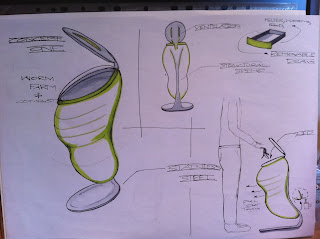Tuesday, May 29, 2012
Monday, May 28, 2012
Sunday, May 13, 2012
Peer comments
Matthew Patane
http://rowenagoodall.blogspot.com.au/2012/05/sparkler-packaging-rational-booklet.html
Rowena Goodall
http://edricides1122.blogspot.com.au/2012/05/project-2-society-packaging-and.html?showComment=1336972169407
Edric verbeek - martin
http://sarahoward1031.blogspot.com.au/2012/05/studio-responsible-packaging.html?showComment=1336976934181
Sarah Howard
http://patrickdunnindustrialdesign.blogspot.com.au/2012/05/buttaway-packaging-rational.html?showComment=1336977679715
Patrick Dunn
Sunday, April 22, 2012
Who killed the electric car?
‘Who killed the electric car?’ (2006) is a documentary by award winning director Chris Payne. The documentary gives us an insight into the cultural, political, environmental and economical effects on the birth and death of the ‘electric car race’. So who killed the electric car?
Customers were satisfied with the cars as they were quick, quiet, aesthetically pleasing and good for the environment. Unfortunately the car was not for everyone as it only had 2 seats and had a driving range of 120miles in one charge. The cars were more expensive to make as the were made by hand and not fully mass produced.
As Global warming became more apparent so did the need for a cleaner alternative to fuel. The Car manufactures were against the mandate put into place which left them with two options. Fight it or comply with it, so they did both. The car manufactures , including GM were backed up by the white house and fought against the mandate and won meaning a car with zero admissions was not needed anymore and was replace by large petrol guzzlers such as the HUMMER. GM had all of their EV-1’s destroyed and put into landfill even though they said they would be fully recycled.
Petrol and car companies then came together against the EV-1 environmentalists and started to develop Hydrogen Fuel Cell technology to replace electricity which to this date has not been achieved because it is extremely expensive and no manmade material is capable of holding enough fuel to make it desirable for the user.
The battery in the EV-1 was not fully developed but GM knew that there were stronger and longer lasting batteries on the market but did not make the effort to use this technology so if the technology and infrastructure was in place who was to blame?
GUILTY:
· Car companies
· Oil companies
· C.A.R.B
· The Government
· Hydrogen fuel cell technology
· Consumers
Today there are cars such as the Honda Insight and the Toyota Prius which combine electricity and petrol to make a Hybrid Drive giving extra mileage per gallon and reducing CO2 admissions. This technology will hopefully develop into mass producing a full plug-in drive resulting in continuing to reduce lower CO2 admissions.
In the end it is a fight about the future. As oil prices rise and Global warming continues to be a hot topic the government and car industry will have to work closely on achieving a cleaner future.
Monday, April 16, 2012
How do they do it?
Sunday, April 15, 2012
How it's made
Giving packaging a new life
Friday, April 13, 2012
Sunday, March 25, 2012
peer comments
http://lizhaozhao3329407.blogspot.com.au/2012/03/seasonings-container.html?showComment=1332736447014
http://christinaale.wordpress.com/2012/03/25/bioinspired-posters/#comment-35
http://lubar-han.blogspot.com.au/2012/03/project-1-bioinspired.html?showComment=1332737553076
http://ides2161-alexjackson.blogspot.com.au/2012/03/project-one-product-poster.html
Monday, March 12, 2012
Sunday, March 11, 2012
Group research
Al Gore's An Inconvenient Truth
An inconvenient truth is an inspirational documentary about the reality of human society’s impact on global warming. The doco is Presented by former vice president Al Gore, who has been leading the global crusade to raise awareness and stop global warming becoming inevitably a deadly process.
Inspired by this theory of global warming at a young age, Al Gore tried taking giving his view about the subject in politics. Being knocked back in the presidential election gave Gore a new thought that ultimately global warming is not a political issue but rather the biggest moral issues facing human kind.
In short Global warming refers to the rising average temperature of Earth's atmosphere and oceans, which started to increase in the late 19th century and is projected to keep going up. Global warming is effecting every part of the earth including its living habitat. Numbers are showing that the earth is heating up at a very fast rate resulting in larger amounts of precipitation from the sea but also form the soil. This is resulting in large amounts of rain fall at one time resulting in flooding and on the opposite end of the spectrum resulting in larger areas effected by draught. Over thousands of speices are on the verge of becoming extinct and because of the rise in heat insects and animals such as mosquitos are entering new found areas and spreading diseases that we have not seen in years.
So what is causing all of this?
Well ultimately it is us. One major factor is our population. Al Gore describes in his life that at the period of the baby boomers the human population was around 2 billion, and now it is just over 6.5 billion people. With the increase of population there had been a higher demand and pressure on food, water and natural resources.
Even long before Al Gores awareness raising Sir Winston Churchill knew that the relationship between human kind and the earth was breaking. He said ““The era of procrastination, of half-measures, of soothing and baffling expedients, of delays, is coming to its close. In its place we are entering a period of consequences.”
These consequences have already started hitting with a rise in natural disasters killing thousands every year. Not only are they more frequent but due to the increase in temperature they are more powerful and bigger.
So how can we reduce these consequences? In the table below Al Gore explained how we can do this and by doing so we can reduce our impact of that of the 1970’s which compared to today is a significantly large amount.

How can I play my role?
As a designer I can create products that are more efficient not only to use but also to manufacture. Use recyclable materials. Create new systems and products engaging and raising awareness to its uses especially generations to come.






























